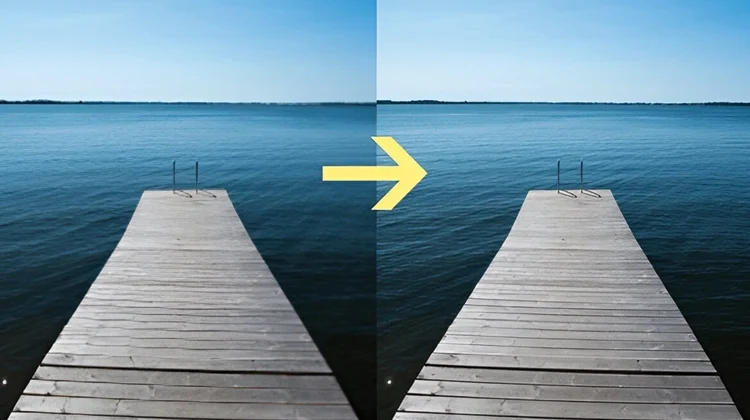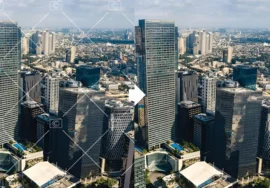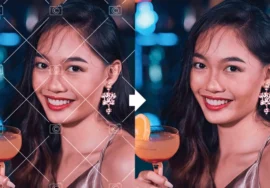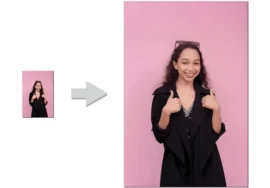
Re-purposing Legacy Graphics: Giving Old Assets New Life with Resolution Enhancement
In today’s driven digital landscape, high-resolution graphics are paramount. Yet, many organizations have a treasure trove of legacy graphics, invaluable assets that could be repurposed if only they could be brought up to modern standards. This is where resolution enhancement comes into play. This article delves into the art and science of re-purposing legacy graphics, focusing on resolution enhancement techniques and their impact on your brand’s visual identity.
Understanding the Challenge of Legacy Graphics
Legacy graphics, often created for print or lower-resolution digital formats, present unique challenges in the digital age. Pixelation, color distortion, and overall quality degradation can hinder their effective use in high-definition displays and marketing materials. However, these assets are often rich in brand history and equity, making them too valuable to discard.
The Power of Resolution Enhancement
Resolution enhancement, a sophisticated image processing technique, solves this dilemma. This technology can improve image quality by up-scaling images while preserving essential details. The result is a revitalized graphic that can integrate into modern marketing campaigns and digital platforms.
Key Benefits of Repurposing Legacy Graphics
- Cost Savings: Re-purposing existing assets is more cost-effective than creating new graphics from scratch.
- Brand Consistency: Maintaining a consistent visual identity across all platforms is crucial. Re-purposing legacy graphics helps preserve brand heritage while aligning with current design standards.
- Increased Efficiency: By leveraging existing assets, design teams can focus on creating new content and streamlining production processes.
- Environmental Impact: Reducing the need for new graphic creation contributes to sustainability efforts by minimizing resource consumption.
The Resolution Enhancement Process
- Image Assessment: A thorough analysis of the legacy graphics is essential to find areas requiring improvement, such as pixelation, color distortion, or noise.
- Algorithm choice: Various algorithms are available for resolution enhancement, each with its strengths and weaknesses. The choice of algorithm depends on the image characteristics and the desired outcome.
- Up-scaling: The selected algorithm applies to the image, increasing its resolution while minimizing artifacts and preserving image quality.
- Image Optimization: The enhanced image may need further optimization, including color correction, sharpening, and noise reduction, to achieve the desired visual appearance.
- Quality Control: The ultimate image is evaluated to make sure it meets the required standards and aligns with the brand’s visual identity.
Advanced Techniques for Resolution Enhancement
- Artificial Intelligence (AI): AI-powered algorithms can analyze image content and fill in missing details, resulting in correct and natural-looking upscale images.
- Deep Learning: Deep learning models can be trained on vast datasets of high-resolution images to learn complex image patterns and generate realistic, upscale results.
- Super-Resolution: This technique involves using multiple low-resolution images of the same scene to create a high-resolution image, often used in satellite imagery and video processing.
Real-World Applications of Repurposed Graphics
- Product Packaging: Revitalized product packaging designs can breathe new life into established brands.
- Marketing Collateral: Repurposed graphics can be used in various marketing materials, including brochures, flyers, and digital ads.
- Social Media: High-quality visuals are essential for social media success. Repurposed graphics can be adapted for different platforms and campaigns.
- Website Design: Enhancing legacy graphics can improve website esthetics and user experience.
- Video Production: Repurposed images can be incorporated into videos as background elements or transitions.
Challenges and Considerations
While resolution enhancement is a powerful tool, it’s essential to be aware of potential limitations. Some images may not be suitable for significant upgrading due to severe degradation or lack of detail. Additionally, it’s crucial to balance image quality with file size to ensure optimal performance across different platforms.
Case Studies: Repurposing Legacy Graphics with Resolution Enhancement
To illustrate the practical application of resolution enhancement, let’s examine a few real-world case studies:
Case Study 1: Automotive Industry
A renowned automotive manufacturer possesses a vast library of high-quality print advertisements featuring iconic car models. To leverage these assets for digital marketing, the company employed resolution enhancement techniques to upscale the images for use on websites, social media, and digital billboards. The result was a visually stunning campaign that resonated with both existing and new customers.
Case Study 2: Fashion Retail
A luxury fashion brand faces the challenge of updating its product catalog while preserving the brand’s heritage. By applying resolution enhancement to vintage product images, the brand created a visually compelling online catalog that showcased its timeless style while appealing to a modern audience.
Case Study 3: Heritage Tourism
A historical society aimed to increase visitor engagement through digital platforms. By enhancing old photographs and illustrations, they created interactive exhibits and virtual tours, bringing history to life for a new generation.
Additional Considerations for Re-purposing Legacy Graphics
- File Format: Consider the original file format and potential conversion to a more versatile format like TIFF or PSD for editing and manipulation.
- Color Profiles: Ensure color accuracy by converting images to a consistent color space (e.g., sRGB or Adobe RGB).
- Metadata: Preserve important metadata, such as copyright information, creation date, and image description, during the re-purposing process.
- Accessibility: Make repurposed graphics accessible to individuals with disabilities by providing alternative text descriptions.
Conclusion
Re-purposing legacy graphics is a strategic investment that yields substantial returns. By harnessing the power of resolution enhancement, businesses can unlock the hidden value of their visual assets, enhance brand consistency, and improve overall marketing effectiveness. As technology continues to advance, we can expect even more sophisticated and efficient methods for revitalizing old graphics, ensuring their relevance in the ever-evolving digital landscape.
By incorporating these additional elements, your blog post will provide a more comprehensive and informative resource for readers interested in re-purposing legacy graphics.





